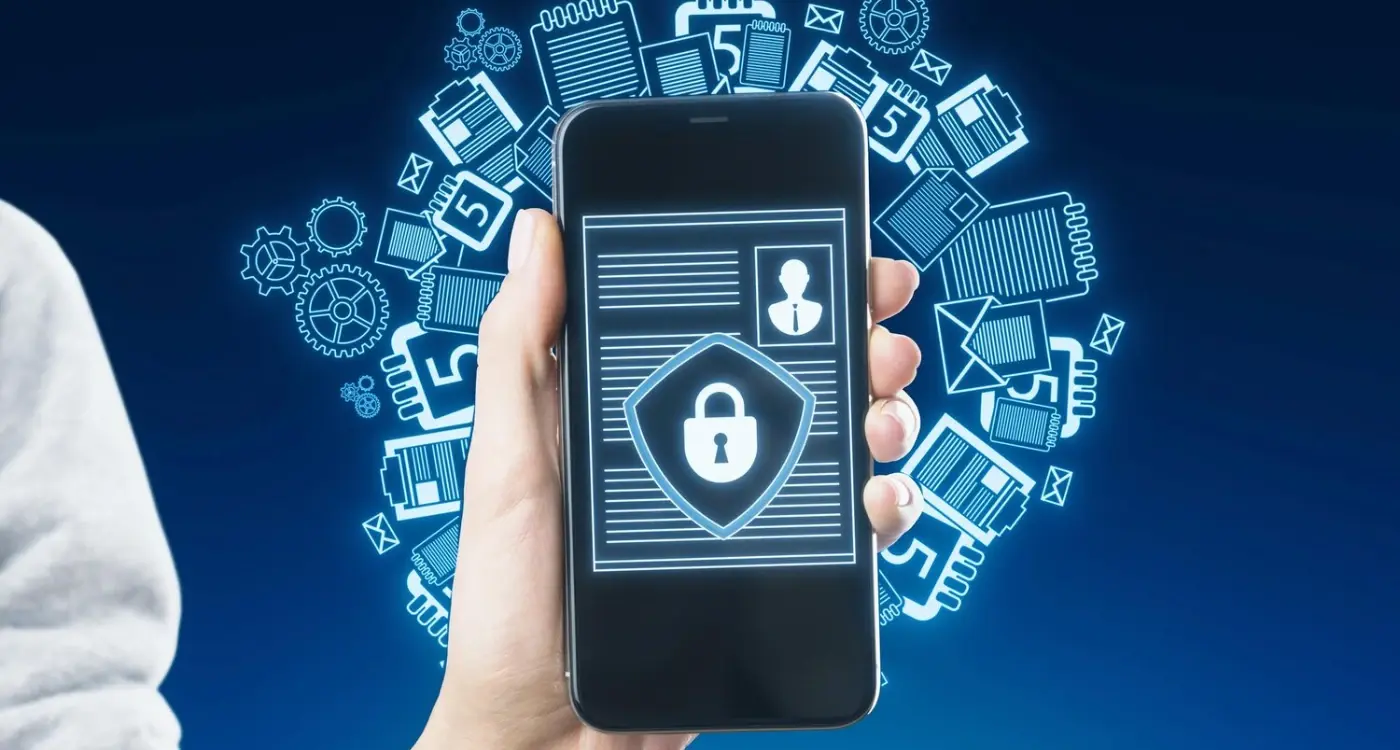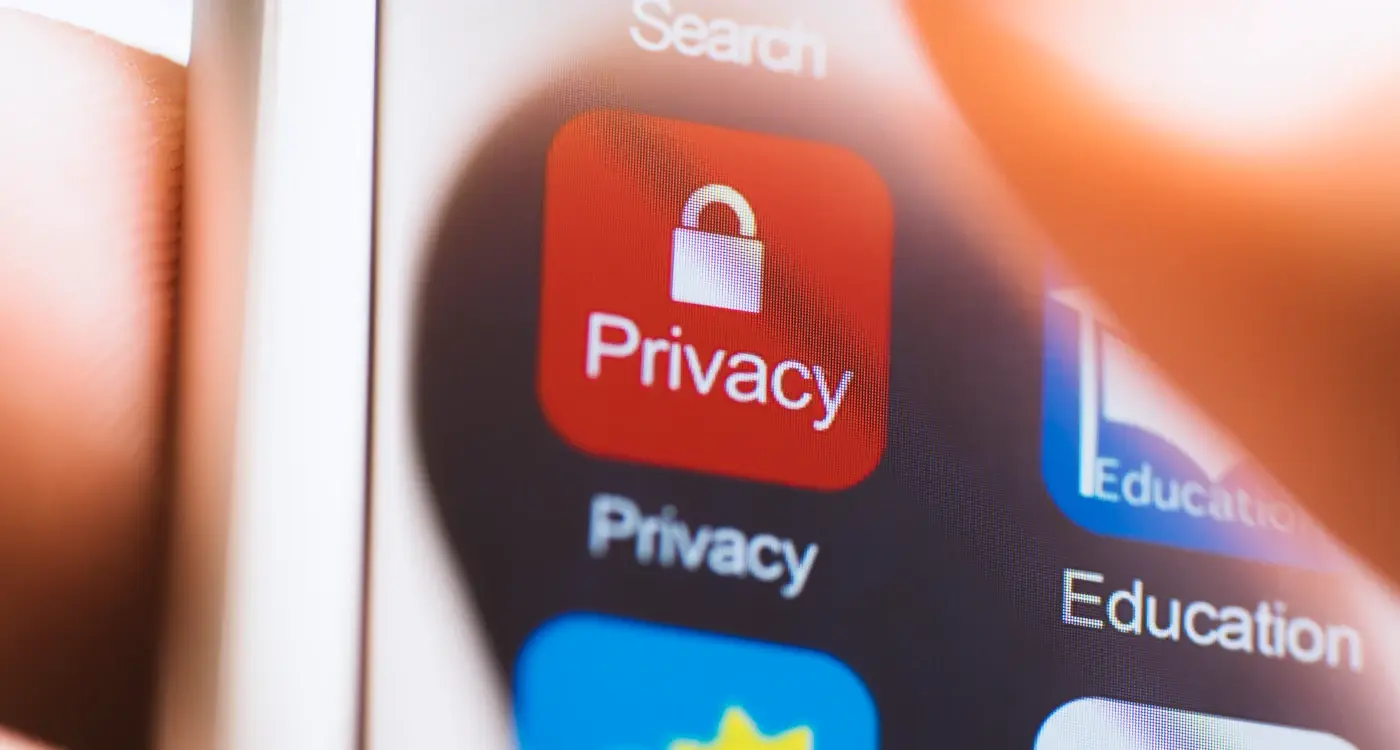Do I Need To Worry About Data Protection And Privacy In My App?
Did you know that the average smartphone app collects over 20 different types of personal data from its users? That's everything from your location and contacts to your browsing habits and device information. And here's the kicker—most app owners have no idea what data they're actually collecting, let alone whether they're handling it legally.
If you're building a mobile app, data protection isn't just a nice-to-have feature you can bolt on later. It's a legal requirement that could make or break your business. Get it wrong and you're looking at hefty fines, angry users, and potentially having your app removed from app stores. Get it right and you'll build trust with your users whilst avoiding some very expensive headaches.
The question isn't whether your app handles personal data—it's whether you're handling it properly
This guide will walk you through everything you need to know about app data protection and privacy laws. We'll cover the big regulations like GDPR, show you how to build security into your app from the start, and explain how to get user consent without annoying people. By the end, you'll understand exactly what you need to do to keep your app compliant and your users happy.
What Is App Data Protection And Why Does It Matter?
App data protection is about keeping your users' personal information safe and secure. Think of it like this—when someone downloads your app, they're trusting you with their details. This might be their name and email address, or it could be more sensitive stuff like their location, photos, or payment information. Your job is to make sure that data doesn't end up in the wrong hands.
Now, you might be thinking "my app doesn't collect much data, so I don't need to worry about this." But here's the thing—even the simplest apps usually collect more information than you'd expect. Your analytics tools are tracking user behaviour, crash reporting services are collecting device information, and your login system is storing user credentials. It all adds up.
Why should you care about protecting this data?
There are three big reasons why data protection matters for your app:
- Legal requirements—privacy laws like GDPR can hit you with hefty fines if you get it wrong
- User trust—people won't use apps they don't feel safe with
- Business reputation—data breaches make headlines for all the wrong reasons
Getting data protection right from the start saves you headaches later. Trust me on this one—it's much easier to build security in than to bolt it on afterwards.
Understanding Your Users' Personal Information
When you're building an app, you might think personal information just means names and email addresses. But here's the thing—it's much broader than that! Personal information is basically any data that can identify someone or tell you something about them. This includes their location, what they buy, how they use your app, and even their device ID.
Think about it this way: if someone could look at a piece of data and say "ah, that's definitely Sarah from Manchester who loves pizza," then it's personal information. And yes, even seemingly harmless stuff like IP addresses count because they can be traced back to individuals.
What Counts as Personal Information
Here's what you need to watch out for when collecting user data:
- Contact details (names, emails, phone numbers)
- Location data (GPS coordinates, check-ins)
- Device information (unique IDs, operating system)
- Usage patterns (what features they use, when they're active)
- Photos and videos they upload
- Payment information
- Social media profiles they connect
Even if users give you permission to collect their data, you should only collect what you actually need for your app to work properly. More data means more responsibility!
The tricky bit is that some data becomes personal when combined with other information. A shopping list might seem innocent, but pair it with location data and purchase history, and suddenly you know quite a lot about someone's lifestyle and habits. Understanding how your app developers can determine your highest value data will help you focus your protection efforts where they matter most.
The Big Privacy Laws You Need To Know About
Right, let's talk about the privacy laws that could affect your app. Now, I won't sugarcoat this—there are quite a few regulations floating around these days, and they're not going anywhere. The good news? You don't need to become a legal expert overnight, but you do need to know which ones might apply to you.
The Main Players
Here are the privacy laws that most app developers need to keep on their radar:
- GDPR (General Data Protection Regulation) - Covers anyone handling EU citizens' data
- CCPA (California Consumer Privacy Act) - Applies if you're dealing with California residents
- COPPA (Children's Online Privacy Protection Act) - US law for apps targeting kids under 13
- PIPEDA (Personal Information Protection and Electronic Documents Act) - Canada's federal privacy law
- Data Protection Act 2018 - The UK's post-Brexit privacy legislation
What This Means For You
The tricky bit is that these laws often apply based on where your users are, not where your business is located. So if you've got users in California, you might need to comply with CCPA even if you're based in Manchester. It's not about being sneaky or trying to catch you out—it's about protecting people's personal information no matter where it travels.
Each law has its own quirks and requirements, but they all share common themes: be transparent about what data you collect, give users control over their information, and keep everything secure. There are valuable lessons to be learned from high-profile cases, and understanding what app developers can learn from the Twitter lawsuit can help you avoid similar pitfalls.
GDPR And What It Means For Your App
The General Data Protection Regulation—GDPR for short—is probably the most famous privacy law in the world right now. It came from the European Union but its impact reaches far beyond Europe's borders. If your app has even one user in the EU, you need to follow GDPR rules. That's quite a reach!
GDPR gives people strong rights over their personal data. Users can ask to see what information you have about them, request corrections, or even demand you delete everything. They can also say no to you processing their data for certain purposes—and you have to respect that choice.
Key GDPR Requirements For Apps
You need a legal basis for collecting any personal data. This might be user consent, contract necessity, or legitimate interest. You must be transparent about what data you collect and why. Your privacy policy needs to be clear and easy to understand—no legal jargon that confuses people. For a comprehensive breakdown of these requirements, check out our detailed guide on what you need to know about GDPR when creating an app.
GDPR isn't just about compliance; it's about building trust with your users by being transparent about how you handle their personal information
Data breaches must be reported within 72 hours if they pose a risk to users. You also need to implement privacy by design—building data protection into your app from the start rather than bolting it on later. The fines for getting this wrong can be massive, but more importantly, you'll lose user trust if you mess up their data protection.
Building Security Into Your App From Day One
Here's something I've learnt after years of building apps—security isn't something you can bolt on at the end. I've seen too many developers treat it like an afterthought, and trust me, that's a recipe for disaster. The best apps I've worked on had security baked into every decision from the very beginning.
Think of security as the foundation of your house. You wouldn't build walls first and then worry about foundations later, would you? Same principle applies to your app. Every feature you add, every piece of data you collect, every screen you design—they all need to consider security implications.
What Does Security Actually Mean?
Security in apps isn't just about keeping hackers out (though that's part of it). It's about protecting your users' information at every step. This means encrypting data when it's stored on their phone, making sure information travels securely between your app and your servers, and only giving people access to what they actually need. To understand the full scope of protection required, our guide on what security measures your business app needs provides comprehensive coverage of essential security requirements.
- Encrypt all sensitive data—both on the device and when sending it over the internet
- Use secure authentication methods like biometrics or strong passwords
- Regularly update your app to fix any security holes that might be discovered
- Test your app's security before you launch it to the public
- Only collect the minimum amount of data you actually need
The good news? Most of these security measures don't slow down development if you plan for them early. But trying to add them later? That's when things get expensive and complicated.
Getting User Consent The Right Way
Getting consent from your users isn't just about ticking a box—it's about being honest and transparent about what you're doing with their information. I've seen too many apps get this wrong, and trust me, it comes back to bite them later. The key is making sure your users actually understand what they're agreeing to, not just presenting them with pages of legal jargon they'll never read.
Your consent requests need to be clear, specific, and given freely. This means no pre-ticked boxes, no bundling different permissions together, and definitely no hiding consent requests in your terms and conditions. Users should be able to say yes or no to different types of data collection separately. For example, they might be happy for you to use their location for the app to work properly, but they don't want you sharing their email address with marketing partners. Understanding exactly what consent you need to get from your app users will help you implement proper permission systems from the start.
Make your consent requests as simple as possible. Use plain English and explain exactly what data you want and why you need it. Think "We'd like to access your photos so you can upload pictures to your profile" rather than "The application requires media file permissions for enhanced functionality."
Remember that consent isn't a one-time thing either. Users can change their minds, and you need to make it easy for them to withdraw their consent whenever they want. This means having clear privacy settings in your app where users can see what they've agreed to and change their preferences at any time.
Working With Third Party Services And Data Sharing
Most apps don't work alone—they connect to other services like payment processors, social media platforms, or analytics tools. When your app shares user data with these third parties, you become responsible for what happens to that information. Think of it like lending your friend's homework to someone else; you're still accountable for how it gets used.
Choosing Your Partners Wisely
Not all third-party services handle data the same way. Some are brilliant at protecting user information, whilst others... well, let's just say they're less careful. Before you integrate any service, check their privacy policy and data handling practices. Look for companies that follow the same privacy standards you do—it'll save you headaches later.
Being Transparent About Data Sharing
Users deserve to know when their data leaves your app and where it goes. Your privacy policy should clearly explain which third parties you work with and what data you share with them. Don't hide this information in tiny text at the bottom of a page; make it easy to find and understand. Implementing transparent data practices to build trust with your mobile app users will help you communicate these arrangements clearly and maintain user confidence.
The golden rule here is simple: only share what you absolutely need to share. If a service asks for more data than seems necessary, question whether you really need that integration at all.
Conclusion
Look, I won't sugarcoat it—app data protection and mobile app privacy laws can feel overwhelming when you're trying to get your brilliant app idea off the ground. But here's what I've learned after years of building apps: getting this stuff right from the start will save you massive headaches (and legal bills) down the road.
The reality is that data protection isn't going anywhere. GDPR app compliance and app security requirements are only getting stricter, not more relaxed. Users are becoming more aware of their privacy rights, and they're not afraid to vote with their feet if they don't trust your app. I've seen promising apps crash and burn because they treated privacy as an afterthought rather than a foundation.
The good news? You don't need to become a legal expert overnight. Start with the basics we've covered—understand what personal data you're collecting, get proper consent, build security in from day one, and be transparent about what you're doing with user information. Work with developers who know their stuff when it comes to app security requirements, and don't be afraid to get legal advice when you need it.
Your users are trusting you with their personal information. That's not something to take lightly—it's actually a pretty big compliment when you think about it.
Share this
Subscribe To Our Learning Centre
You May Also Like
These Related Guides

How Do I Prepare My App's Privacy Policy for Stores?

Do I Need a Privacy Policy for My Mobile App?



